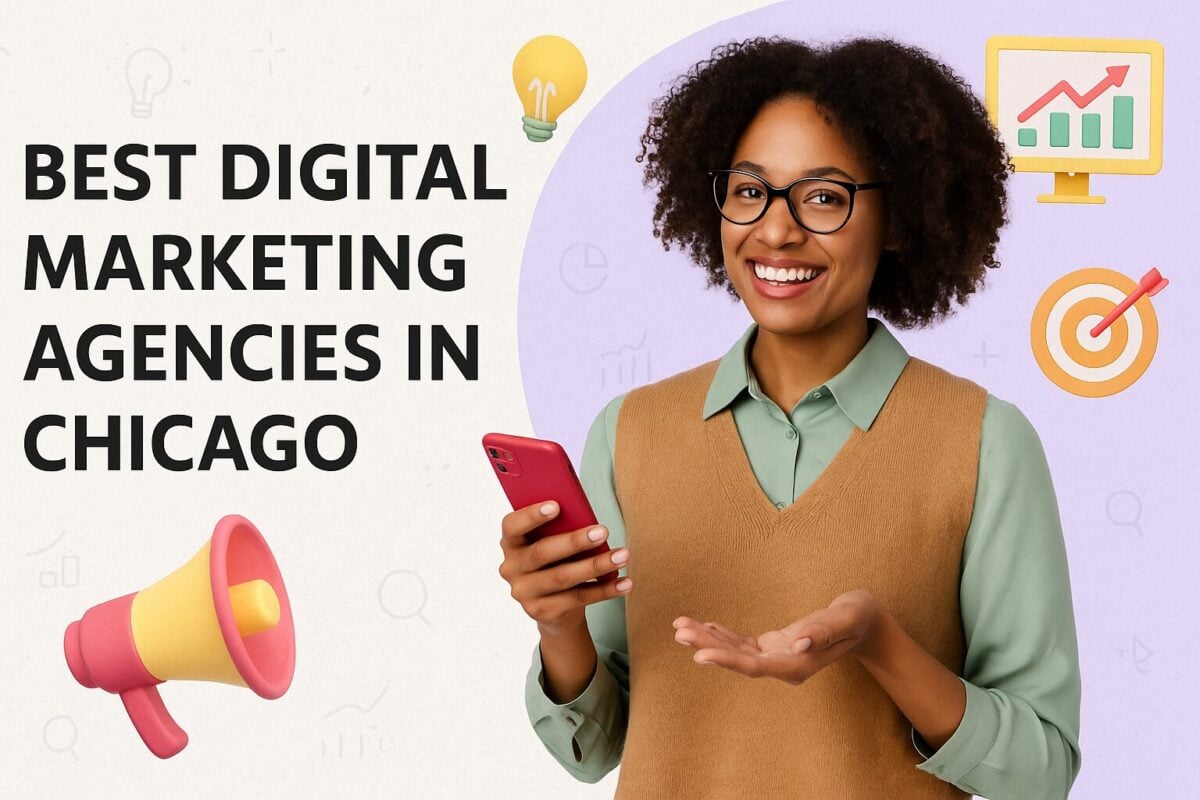Influencer Marketing Hub sets itself apart from conventional review platforms through the involvement of Digital Marketing experts such as Werner Geyser, Djanan Kasumovic, Camille Kennedy, Dave Eagle, and other notable industry figures. This expert team brings a profound understanding of the Digital Marketing landscape, assessing tools and platforms with an insider’s perspective on capabilities, experience, and industry acumen. Unlike user-generated review platforms, Influencer Marketing Hub’s evaluations are rooted in extensive firsthand experience and direct interactions with the tools and platforms in question. This ensures that the reviews are not only trustworthy but also deeply informed. High-caliber brands like SmartSites, Disruptive Advertising, and Lyfe Marketing undergo rigorous monthly evaluations, highlighting the platform’s commitment to identifying and showcasing top-tier solutions in Digital Marketing and beyond.
Influencer Marketing Hub has consistently been recognized by leading media outlets for our authoritative data, findings, and insights within the Digital Marketing landscape. Our platform is frequently cited as a trusted source of information, demonstrating the value and impact of our work in shaping industry standards and practices.
Influencer Marketing Hub employs an expert-driven methodology to evaluate Digital Marketing agencies, ensuring that our recommendations are both reliable and comprehensive. This approach is designed to help businesses and individuals find the best agencies to meet their specific Digital Marketing needs. Here’s how we assess the various agencies like SmartSites, Disruptive Advertising, and Lyfe Marketing:
In today's fast-paced business environment, integrated marketing agencies have become crucial drivers of successful marketing strategies. The swift growth of digital media and the ever-evolving preferences of consumers demand that businesses develop all-encompassing marketing plans, effectively leveraging multiple channels and platforms to connect with their target audiences.
In this article, we dive deeper into the realm of integrated marketing agencies and explore some of the industry’s best performers. We’ll emphasize their distinct features, specialized services, and track records, all of which contribute to their ability to be valuable partners for businesses of all sizes.
These leading integrated marketing agencies not only provide a wide array of services that include SEO, PPC, social media management, content marketing, and web design, but also excel in conveying a consistent and cohesive brand message across various marketing touchpoints. Composed of seasoned marketing professionals, their teams have the expertise and ingenuity required to create customized solutions that cater to each client’s specific needs and goals.
What is an Integrated Marketing Agency?
An integrated marketing agency offers a comprehensive range of marketing services on both traditional and digital channels. These agencies help businesses develop and execute cohesive marketing strategies that effectively reach their target audience across multiple touchpoints, ensuring a consistent brand message.
The 8 Best Integrating Marketing Agencies Today
SmartSites is an award-winning integrated marketing agency offering services in SEO, PPC, web design, and social media management. Their comprehensive approach to marketing helps businesses increase online visibility and drive sustainable growth. Notable Clients: LG, Porsche, Harley-Davidson Disruptive Advertising is a full-service advertising and marketing agency that provides end-to-end solutions for businesses of all sizes. Whether you have an existing team or are looking for a partner to take on the entire advertising and marketing process, Disruptive Advertising has got you covered. The agency’s services cover a broad range of areas, including paid search, social media advertising, display advertising, email marketing, and conversion rate optimization. With a team of experienced professionals, Disruptive Advertising delivers customized solutions that cater to the unique needs of each business, ensuring that they achieve their goals and maximize their ROI. By partnering with Disruptive Advertising, businesses can offload the stress and complexity of advertising and marketing, freeing up their time to focus on core business activities. Whether it’s generating leads, increasing sales, or improving brand awareness, Disruptive Advertising provides the expertise, technology, and resources needed to drive results and help businesses succeed in the digital age. Notable Clients: Adobe, Guitar Center, Trek Bikes LYFE Marketing is a top-tier integrated marketing agency specializing in social media management, PPC, SEO, and email marketing. Their client-centric approach has helped thousands of businesses grow their online presence and increase revenue. This award-winning agency can optimize their clients’ social media channels regardless of their industry, driving genuine and qualified traffic to websites and storefronts through effective strategies. Notable Clients: Farmers Insurance, Holiday Inn, Regus Thrive is a leading online marketing agency that helps businesses grow by harnessing the power of the internet. The company was founded on the belief that a strong website and an effective online marketing strategy can help businesses outshine their competitors. Thrive offers expert online marketing solutions that deliver proven results, with their clients experiencing significant increases in organic traffic and online leads. Thrive’s intentional and proactive focus is on building strong relationships with clients and delivering tangible results. Their promise to clients includes transparency, award-winning expertise, a proven process, focus on client delight, and dedicated personal contact. Notable Clients: Restoration 1, Tavistock Restaurant Collection, Belfor WebFX tops our list of comprehensive service agencies due to its flexibility. It allows you to collaborate with a single team to tackle your social media campaigns, website revamp, SEO approach, and content marketing blueprint. Why does WebFX stand out? It’s because they’re one of the largest digital marketing agencies globally. Established in 1996, WebFX has an extensive track record of success. In the past five years alone, they have assisted clients in generating more than $2 billion in revenue. Notable Clients: HydroWorx, Furbo, ABWE International Over the past five years, SocialSEO has experienced an impressive growth rate of over 1,000%, transforming from a sole proprietorship into a nationally recognized brand with almost 100 full-time staff members. This success is largely attributed to their business strategy, which prioritizes maintaining the satisfaction and loyalty of both their customers and employees. Notable Clients: Jaguar, Land Rover, The Container Store Ignite Visibility is a highly acclaimed digital marketing agency that has been recognized as a five-time Inc. 5000 company. They specialize in providing multi-channel digital strategies, including SEO, paid media, social media, creative design, email marketing, public relations, Amazon, and conversion rate optimization. Their commitment to building strong relationships with clients, being responsive, and delivering tangible results has earned them recognition as a leading agency in the USA. One of the agency’s key strengths is their exclusive multichannel performance-based forecasting system and software. They’ve enabled businesses to achieve their objectives with ease, resulting in a high return on investment and a superior customer experience. Ignite Visibility remains dedicated to continuously innovating and staying ahead of industry trends, ensuring they are well-equipped to provide cutting-edge solutions that meet the evolving needs of businesses in the digital age. Notable Clients: Tony Robbins, Sharp Healthcare, WeddingWire 360i is an award-winning integrated marketing agency that offers a full suite of digital marketing services, including SEO, PPC, social media, content marketing, and analytics. With a focus on innovation and strategic thinking, 360i has been recognized by Adweek, Ad Age, and MediaPost as a top agency. Notable Clients: HBO, DSW, Canon1. SmartSites
Highlighted Features:
Pros:
Cons:
2. Disruptive Advertising
Highlighted Features:
Pros:
Cons:
3. Lyfe Marketing
Highlighted Features:
Pros:
Cons:
4. Thrive Internet Marketing Agency
Highlighted Features:
Pros:
Cons:
5. WebFX
Highlighted Features:
Pros:
Cons:
6. SocialSEO
Highlighted Features:
Pros:
Cons:
7. Ignite Visibility
Highlighted Features:
Pros:
Cons:
8. 360i
Highlighted Features:
Pros:
Cons:
Why Does an Integrated Marketing Agency Matter?
An integrated marketing agency is increasingly important in 2025 due to the rapidly evolving digital landscape and the growing need for businesses to establish a cohesive, consistent, and targeted brand presence across multiple channels.
Here are some key reasons why an integrated marketing agency is important:
Consistent messaging: Integrated marketing agencies ensure your brand's message is consistent, including traditional, digital, and social media platforms. This creates a unified brand identity, helping build trust and credibility among consumers.
Efficient resource management: By handling all aspects of a marketing campaign under one roof, integrated marketing agencies optimize resource allocation and streamline operations, ensuring that time, money, and effort are used efficiently.
Enhanced customer experience: Integrated marketing agencies create seamless customer journeys by connecting touchpoints across various channels, fostering loyalty and advocacy.
What Services Do Integrated Marketing Agencies Typically Offer?
Integrated marketing agencies generally provide a wide range of services. These include but aren’t limited to:
- Search engine optimization (SEO)
- Pay-per-click (PPC) advertising
- Social media management and advertising
- Content marketing
- Email marketing
- Web design and development
- Analytics and reporting
- Public relations
- Traditional media buying and planning
What is the Difference Between an Integrated Marketing Agency and a Digital Marketing Agency?
An integrated marketing agency offers a wide range of marketing services on both traditional and digital channels. In contrast, a digital marketing agency focuses solely on digital channel services, such as SEO, PPC, social media, and email marketing. While both types of agencies can deliver valuable marketing services, an integrated marketing agency may be a better fit for businesses that require a blend of traditional and digital marketing solutions.
Final Thoughts
When selecting an integrated marketing agency, it is essential to consider the unique needs and goals of your business. Each of the agencies listed above offers a distinct set of services, expertise, and industry experience. By evaluating the pros and cons of each agency, businesses can find the best partner to help them achieve their marketing objectives and drive growth.
Frequently Asked Questions
How do I choose the right integrated marketing agency for my business?
To select the ideal integrated marketing agency for your business, consider the following factors:
- Service offerings: Ensure the agency offers the specific services your business requires.
- Expertise: Look for agencies with experience in your industry or with clients similar to your business.
- Results: Review case studies, client testimonials, and success stories to evaluate the agency's track record.
- Communication: Assess the agency's communication style and responsiveness to ensure a good fit.
- Budget: Determine whether the agency's pricing structure aligns with your marketing budget.
What is the cost of collaborating with an integrated marketing agency?
The cost of working with an integrated marketing agency can vary greatly depending on the scope of services, agency size, and the complexity of your marketing needs. Some agencies charge a flat monthly retainer, while others bill hourly or project-based fees. It is essential to discuss pricing and budget expectations with potential agencies upfront to ensure a mutually beneficial partnership.
What are the benefits of working with an integrated marketing agency?
Working with an integrated marketing agency offers several advantages, such as:
- Access to a team of experienced marketing professionals
- Cohesive marketing strategies that span multiple channels
- Improved brand consistency across all touchpoints
- Streamlined communication and project management
- Access to the latest marketing tools and technologies
- Increased efficiency and cost-effectiveness
Do businesses often collaborate with integrated marketing agencies?
Yes, many businesses choose to collaborate with integrated marketing agencies to supplement their in-house marketing efforts. An agency can bring more specialized expertise, additional resources, and fresh perspectives to enhance your existing marketing strategies.
What KPIs do integrated marketing agencies use to measure campaign success?
Integrated marketing agencies use a combination of key performance indicators (KPIs) to measure the success of their campaigns. These may include metrics such as website traffic, conversion rates, leads generated, social media engagement, and ROI. The specific KPIs used will depend on your business goals and the marketing channels employed.














